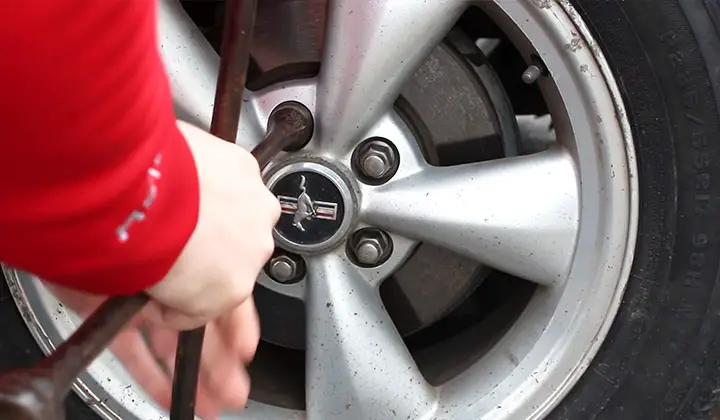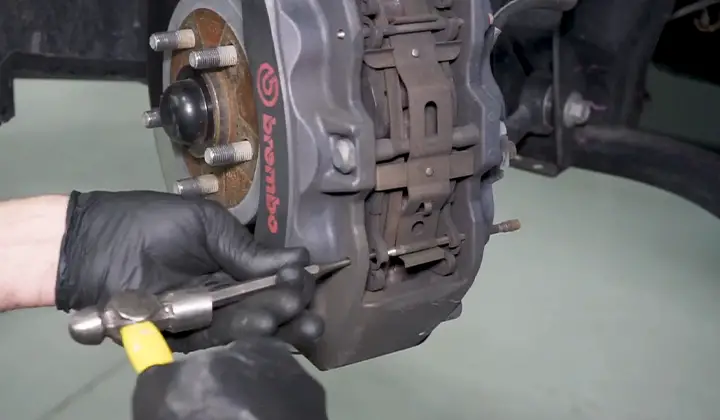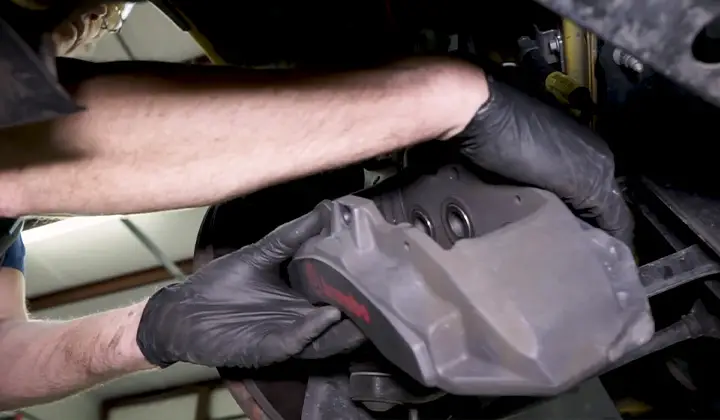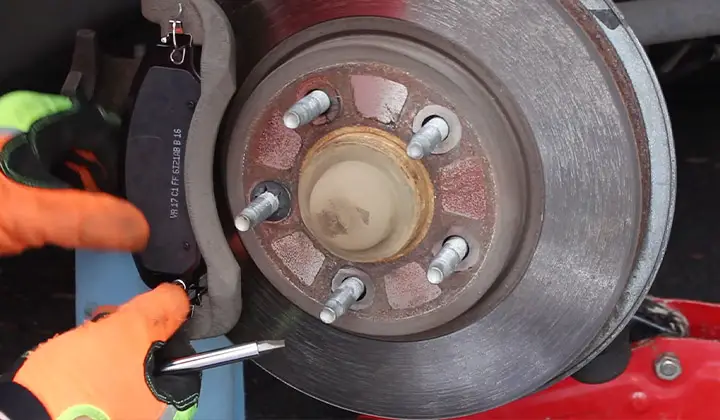Brake pads can become worn over time and need to be replaced in order to provide maximum stopping power. The procedure is simple but does require some tools and knowledge of how the Mustang works.
Follow these steps for a successful brake pad swap: remove the wheel, unscrew the caliper, remove the old pad, install the new pad, and tighten screws.
Contents
Brake Pads in Mustang
Brake pads are the part of the brake system that stops the car from moving. They are made up of a metal material and have a rubber lining.
Changing brake pads on your Mustang is not difficult, but it does require some tools and knowledge. You will need to remove the old brake pads, clean off any dirt or debris, and then install new ones.
How To Change Brake Pads on Mustang
If you’re looking to change the brake pads on your Mustang, it’s not difficult – but there are a few things that need to be done first.
First, remove the wheel and tire. Then unplug the ABS sensors (if they have them).
Finally, use a flathead screwdriver to pry off the four screws that hold in the calipers.
Carefully pull out each pad – making sure to save any springs or clips – and replace them with new ones. Be sure to put everything back together in reverse order.
Remove the Wheel
To remove the brake pads, you’ll first need to remove the wheel. To do this, loosen the wheel bolts and unsnap the tire from the rim. Once it’s free, simply pull it off of the car.

Remove Slider Bolt
Once you’ve removed the wheel, next you’ll need to take out the slider bolt – located on either side of your Mustang’s rotor (see images below).

It should be a standard Allen wrench that fits both sides of your caliper (3mm or 6mm hexagon head is common), so just unscrew it with care.
Pivot Brake Caliper Up
Now that everything is loose, all that remains is to pivot each brake caliper up and off of its mounting bracket (you may have to use a pry bar if necessary). Make sure not to lose any screws along the way – they’re usually fairly small & easy to miss.

Disconnect Pedals & Retrieve Pad Sets
Once everything is loosened up, disconnect each pedal by gently pulling them away from their spring-loaded retainer clips and set them aside in a safe place (brake shoes can also be replaced at this point.).
Finally, grab hold of one pad set and lift it out of its housing – careful not to pinch yourself in between metal plates.
And voila…your new brake pads are ready for installation.
Slide Out the Old Brake Pads
To remove the old brake pads, you will need to first slide out the springs and retainers. This can be done by pushing down on each end of the caliper until it falls out of its mounting bracket.
Replace the Retaining Clips
You’ll then need to replace the retaining clips with new ones, which will help keep everything in place while you’re working on the brakes. You should use a special tool called a clip wrench to do this job properly.
Slide In the New Brake Pads
After replacing the retaining clips, it’s time to slide in your new brake pads. Make sure that they are fully seated before retraction of pistons, otherwise, there could be damage caused to your braking system or rotors.

Retract the Pistons
The pistons are located on either side of the caliper and when you pull them out, it will allow you to access the brake pads.
Make sure that you have a firm grip on each piston before retracting them so that your brakes don’t end up getting damaged in any way.
Also Read – How To Change Brake Pads on Lexus GS 350
How To Prevent Brake Pads from Warning Out
Brake pads are one of the most important parts of your car, and they should be checked and replaced regularly. If they start to wear out, this can cause your brakes to stop working properly. Here’s how you can prevent brake pads from warning out:
Change Your Brake Pads Regularly
Brake pads are designed to last for around 100,000 miles, but they will eventually wear out. The main cause of brake pad wear is heat and friction. Over time, the pads will start to become less effective at stopping your car in a timely manner. To avoid having to replace your brake pads on a regular basis, it is important to change them regularly.
Check For Wear and Damage on A Regular Basis
Brakes play an important role in preventing accidents and reducing stress on the vehicle’s suspension system.
However, if you don’t monitor their performance closely, brakes can begin to show signs of wear and damage over time which could lead to further problems down the road such as reduced braking power or even failure altogether.
Add Anti-Theft Mechanism to Vehicle When Changing Brakes If Possible
If you plan on changing your car’s brakes yourself, adding an anti-theft mechanism such as a keyless entry system or immobilizer may help keep your new set of brakes safe from thieves when you’re not using them.
FAQs
Can I Change My Brake Pads Myself?
Yes, you can change your own brake pads. However, it is important to heed the safety precautions outlined in the owner’s manual for your car.
How Much Is a Brake Job for a Mustang?
Brakes can range from $200 to $000 depending on the type of brakes, the cost of repair, and how much time it takes for your Mustang to be fixed.
What Tools Do I Need to Replace Calipers?
Some tools that may be needed to replace calipers include a wrench, a socket, and a ratchet.
What Sound Does a Bad Brake Caliper Make?
Brake calipers are made up of metal and rubber, and bad calipers can make a noise similar to that of worn-out brake pads.
To Recap
If you’re looking to change your brake pads on a Mustang, there are a few things you’ll need before getting started.
First, make sure to have the right tools: a wrench or socket set, and some brake fluid.
Next, remove the front wheel and tire. Then use the wrench or socket set to unscrew the bolts that hold in the brake pad(s) (2 per side).
Finally, lift out the old pads and replace them with new ones. Be sure to apply pressure while screwing in these bolts for the best results.
Be sure you don’t overheat or damage any of the components while changing them out.
